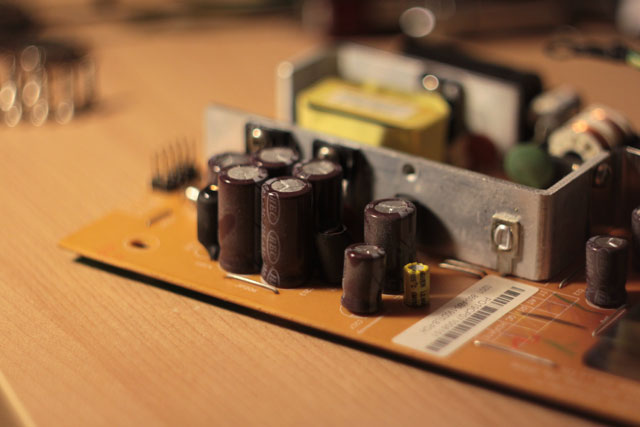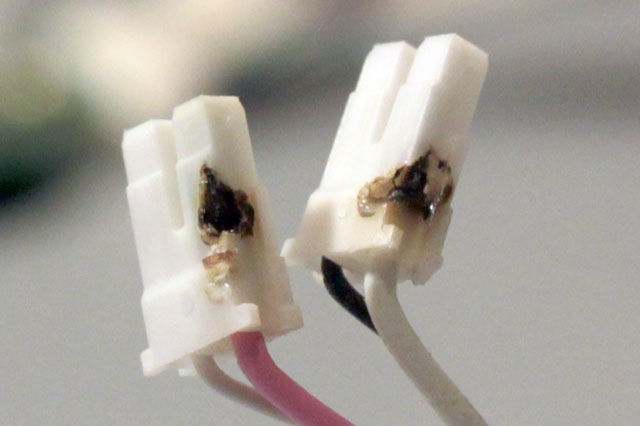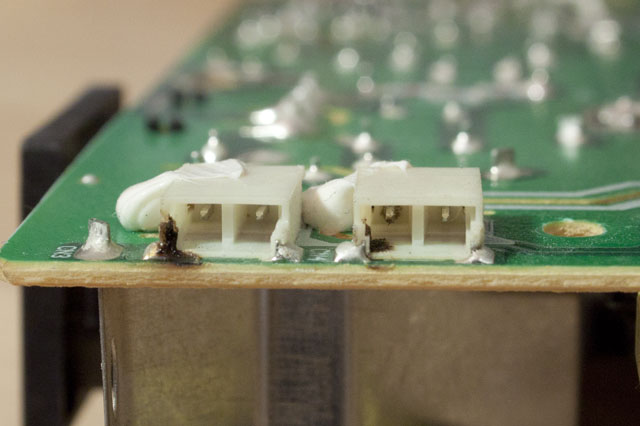Monitor: ProView PL926Wbi
Background: I've had this LCD monitor for three years. Earlier today I used it at a friend's house without problem.
Problem: After bringing it home and turning it on, I saw my desktop but the colors were all shifted. The screen went black after a few seconds. A very small amount of smoke was witnessed.
Without further ado, I started the disassembly.
Inspection:
All the capacitors look fine.

The source of the smoke became evident when I saw the burn marks around one pair of backlight connections.


There is another pair of these connections that look absolutely fine.
Hypothesis:
I'm guessing an electrical connection was broken and the high voltage current jumped the gap, releasing a lot of heat and charring the plastic.
So at this point it seems as though the best solution is to replace the connectors and plugs. Am I correct?
The big question here is whether this is the cause or just a symptom.
Could something have caused the connection to develop such a high resistance that the current preferred to simply jump through the plastic?
Or perhaps a wire came loose during the trip back home?
Background knowledge:
I'm handy with a soldering gun but this is my first attempt at fixing an LCD. Any advice is appreciated.
Background: I've had this LCD monitor for three years. Earlier today I used it at a friend's house without problem.
Problem: After bringing it home and turning it on, I saw my desktop but the colors were all shifted. The screen went black after a few seconds. A very small amount of smoke was witnessed.
Without further ado, I started the disassembly.
Inspection:
All the capacitors look fine.

The source of the smoke became evident when I saw the burn marks around one pair of backlight connections.


There is another pair of these connections that look absolutely fine.
Hypothesis:
I'm guessing an electrical connection was broken and the high voltage current jumped the gap, releasing a lot of heat and charring the plastic.
So at this point it seems as though the best solution is to replace the connectors and plugs. Am I correct?
The big question here is whether this is the cause or just a symptom.
Could something have caused the connection to develop such a high resistance that the current preferred to simply jump through the plastic?
Or perhaps a wire came loose during the trip back home?
Background knowledge:
I'm handy with a soldering gun but this is my first attempt at fixing an LCD. Any advice is appreciated.

Comment